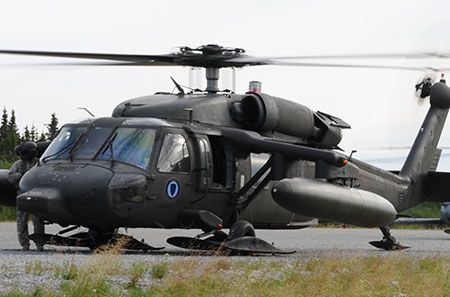Achieving Excellence: Key Methods for UH 60 Helicopter Upkeep
Wiki Article
Navigating Uh 60 Helicopter Rules and Conformity Requirements

Regulatory Framework Introduction
The governing structure regulating UH-60 helicopter operations encompasses a complex set of standards and guidelines developed by air travel authorities. These policies are developed to guarantee the reliable and risk-free operation of UH-60 helicopters in numerous settings. The Federal Air Travel Administration (FAA) plays a main duty in establishing and imposing these regulations, which cover a vast array of operational elements, consisting of airworthiness requirements, pilot qualifications, upkeep demands, and operational treatments.Conformity with these regulations is vital for helicopter operators to maintain the highest degree of safety and operational honesty. Failure to follow these policies can lead to significant repercussions, including mishaps, injuries, and regulative assents. As a result, helicopter operators have to stay educated regarding the latest governing developments and make certain that their operations remain in full conformity with all appropriate regulations and standards.
Airworthiness Instructions and Evaluations
Among the regulatory framework governing UH-60 helicopter operations, an important emphasis rests on conformity with Airworthiness Directives and conducting extensive examinations to promote safety standards and operational reliability. Airworthiness Directives (ADs) are issued by aviation authorities to address hazardous problems in aircraft, including the UH-60 helicopter, and mandate specific actions to be taken by proprietors or drivers. Compliance with ADs is necessary, and failure to comply with these regulations can result in serious consequences, consisting of grounding of the airplane.
Routine assessments are vital to guaranteeing the airworthiness of UH-60 helicopters. These evaluations encompass a variety of checks, from regular everyday evaluations conducted by pilots prior to and after trips to more comprehensive set up upkeep evaluations accomplished by licensed mechanics. Additionally, unique assessments may be called for based on specific problems or incidents. By sticking to a stringent inspection routine, operators can detect and resolve prospective concerns immediately, thus boosting the security and integrity of UH-60 helicopter operations.
Pilot Qualifications and Training

Pilot training for UH-60 helicopters is extensive and covers a variety of subjects, including aircraft systems, emergency treatments, navigating, and mission-specific training. Additionally, pilots undergo simulator training to exercise different emergency situation scenarios in a regulated atmosphere. This training helps pilots establish the necessary abilities to deal with tough situations properly.


Additionally, continuous training and expert advancement are necessary for UH-60 pilots to remain present with the most current guidelines, innovation, and best practices. By buying pilot credentials and training, drivers can enhance safety, optimize efficiency, and make sure compliance with regulatory needs in the procedure of UH-60 helicopters.
Operational Limitations and Requirements
Pilot qualifications and training act as the structure for understanding the functional restrictions and demands related to UH-60 helicopter procedures (uh 60). These operational restrictions are implemented to ensure the safety and security of the team, passengers, and the airplane itself. Operational limitations might consist of elements such as weather, weight restrictions, elevation restrictions, and functional limits. It is essential for pilots to be fluent in these restrictions to make enlightened decisions throughout flight procedures. In addition, conformity needs, such as sticking to particular trip paths, interaction protocols, and emergency situation treatments, are necessary for maintaining functional safety and regulative conformity. Pilots should remain current with all functional constraints and demands via regular training, rundowns, and reviews to alleviate risks and make sure secure and efficient UH-60 helicopter operations. click resources By prioritizing adherence to these functional standards, pilots can enhance the general safety and security and performance of their objectives while promoting regulatory standards.Emergency Procedures and Compliance Testing
Reliable emergency situation treatments and detailed conformity screening are important elements of preserving operational safety and regulatory adherence in UH-60 helicopter procedures. Emergency situation treatments include procedures for various scenarios, consisting of engine failings, fires, hydraulic problems, and much more. Pilots and crew members should be well-versed in these treatments to react quickly and efficiently in emergency situations. Regular conformity testing makes certain that the helicopter fulfills all regulative demands stated by air travel authorities. This testing involves detailed evaluations, checks, and analyses to confirm that the airplane is airworthy and in compliance with all appropriate regulations.Furthermore, conformity screening may include simulations of emergency situation circumstances to analyze the crew's action and the helicopter's efficiency under stress. By prioritizing emergency procedures and compliance screening, UH-60 drivers can minimize threats and demonstrate their commitment to safety and regulatory compliance.
Final Thought
In verdict, adherence to governing structure, conformity with airworthiness regulations, pilot certifications and training, operational constraints, and emergency situation procedures are essential for navigating the policies and needs of running a UH-60 helicopter. uh 60. It is essential for drivers to prioritize security and make sure complete conformity with all appropriate guidelines to keep the airworthiness and operational integrity of the aircraftNavigating the governing landscape bordering UH-60 helicopter procedures requires a nuanced understanding of the intricate internet of regulations and conformity demands.Compliance with these guidelines is crucial for helicopter operators to maintain the highest degrees of safety and operational integrity.Amidst the regulative structure regulating UH-60 helicopter procedures, a crucial emphasis lies on compliance with Airworthiness Directives and conducting complete assessments to maintain security criteria and operational reliability.Reliable emergency situation procedures and thorough conformity screening are crucial parts of preserving functional security and regulative adherence in UH-60 helicopter operations. Routine conformity testing makes certain that the helicopter see here satisfies all regulatory needs set forth by aviation authorities.
Report this wiki page